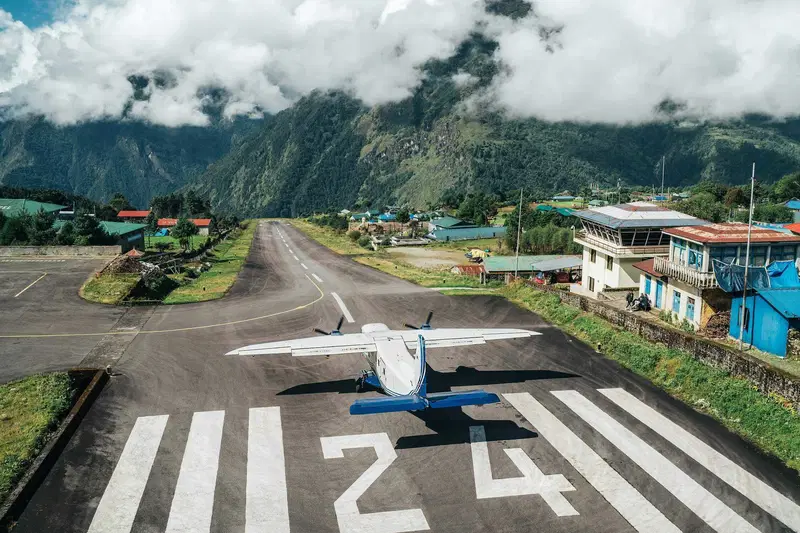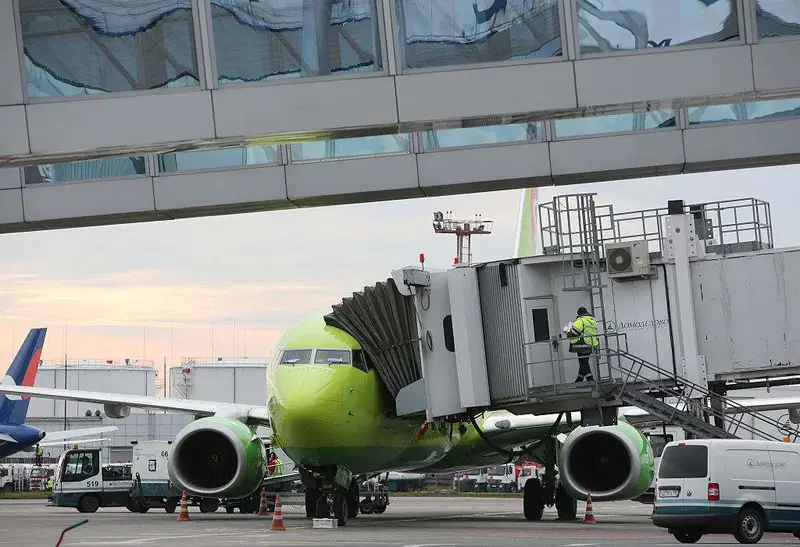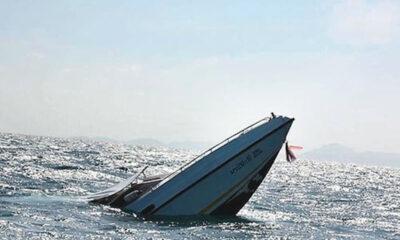Headline
Senate Begins Moves to Ensure Immediate Relocation Of Oil & Gas Companies To Operational Bases In N’Delta
Published
4 years agoon
By
Editor
The Senate has begun moves to ensure that all Oil and Gas Companies in Nigeria as a matter of urgency, relocate to the operational bases especially in the Niger Delta geo-political zone of the country.
To fast track the movement of the companies, the Senate on Tuesday, mandated its Committees on Petroleum Resources Upstream; Downstream Petroleum Sector and Gas to liaise with the Ministry of Petroleum Resources and the Presidential Implementation Committee on the Petroleum Industry Act (PIA) to facilitate the relocation of the oil and gas companies in Nigeria to their various operational bases to ensure their smooth operations.
The Committees on Upstream; Downstream and Gas are chaired by Senators Muhammed Sabo, All Progressives Congress, APC, Jigawa South West; Albert Bassey Akpan, Peoples Democratic Party, PDP, Akwa Ibom North East and James Manager, PDP, Delta South respectively.
Resolutions of the Senate were sequel to a motion titled, ‘urgent need to encourage all multinational and Nigerian Oil and Gas Companies to relocate to their Operational Bases.’
The motion was sponsored by Senator Albert Bassey Akpan, PDP, Akwa Ibom North East and co- sponsored by 23 others.
Presenting the motion, Senator Akpan said that “The Senate notes with concern that multinational and Nigerian oil and gas companies have over the years been operating from their respective operational bases until militancy and insecurity in the host communities in the Niger Delta became the order of the day.
“Also notes that the reason proffered by the oil and gas companies for not relocating to their host communities has always been due to insecurity and hostilities in the host communities.”
According to him, the Senate is “Aware that operating outside the host communities and the operational base is the reason for the high cost of production which has been the bane of the country’s oil and gas industry, militating against maximum revenue from crude oil and gas sales to the Federation Account;
“Recalls that this high cost of production has been one of the most contentious elements of our petroleum industry value chain.”
Senator Akpan said that the Senate is “Convinced that the recent passage and signing into law of the Petroleum Industry Act, 2021 (PIA) by the National Assembly and the President of the Federal Republic of Nigeria respectively, is a major milestone towards the restoration of lasting peace in the host communities;
“Further convinced that the Petroleum Industry Act, 2021 now places certain responsibilities on the security, peace and safety of oil and gas infrastructure on the host communities to safeguard and ensure peaceful co-existence between oil and gas companies and their host communities.
READ ALSO: Urhobo, Isoko Ex-agitators Team Up, Inaugurate Exco
According to him, the Upper Chamber is, “Further convinced that is an opportunity to restore, recover and rehabilitate the massive and huge infrastructural facilities abandoned by the various oil and gas companies in their various operational bases to ensure their full utilization; and
“Assured that the relocation of these companies to their host communities will further boost development in those areas and enhance the corporate social relationship and strengthen our collective resolve to considerably reduce the contentious cost of production and ensure adequate returns to the federation account.”
You may like

In a world filled with sprawling mega-terminals and transcontinental flights, there are still places where flying is raw, rugged, and incredibly personal.
Each one is a story of bold landings, short runways, and human ingenuity. although there’s no official metric defining “smallest” (e.g., by size, traffic, or infrastructure).
These are the world’s smallest airports, tiny airstrips tucked into remote islands, mountainsides, and icy frontiers.
1. Juancho E. Yrausquin Airport – Saba, Caribbean Netherlands
On the volcanic island of Saba, this airport looks more like a cliffside parking lot than a place for planes. Its runway is only 400 meters long, the shortest in the world that handles commercial flights.
At each end is a drop straight into the Caribbean Sea. There is no room for error here, which is why only small STOL aircraft and specially trained pilots are allowed to land. Despite its challenges, this little airport is a lifeline for the island’s residents and the adventurous tourists who dare to visit.
2. Tenzing-Hillary Airport – Lukla, Nepal
High in the Himalayas near Mount Everest, Tenzing-Hillary Airport is not just small, it’s extreme. At nearly 9,400 feet above sea level, its 527-meter runway slopes sharply downward toward a cliff, helping planes gain speed on takeoff but giving pilots little room to brake when landing.
Strong winds, fog, and unpredictable weather make it one of the most dangerous airports in the world. Yet it’s the main gateway for trekkers and climbers heading toward the Everest Base Camp, and most consider it an unforgettable part of the journey.
READ ALSO: Syncope Or Fainting: What You Need To Know
3. Barra Airport – Outer Hebrides, Scotland
Wike’s remarks in church disrespect to sacred space — Ejiofor
Barra is a place where the ocean tide decides when planes can land. This airport, located on a beach in the Outer Hebrides, is the only one in the world where scheduled commercial flights use sand as their runway.
Aircraft land and take off during low tide, using the wide, flat shoreline as a landing strip. When the tide comes in, the runway disappears beneath the waves. It is an extraordinary experience for passengers and a perfect example of how humans adapt to nature in creative ways.
4. Courchevel Altiport – French Alps, France
This airport serves one of the most exclusive ski resorts in the world, but it is also one of the trickiest to land in. Courchevel’s runway is only 537 meters long and built into a steep Alpine slope.
There is no chance to circle back if something goes wrong, so the approach must be perfect. Surrounded by snow-covered peaks and perched at over 6,500 feet, the airport is used mostly by helicopters and small private planes. Landing here feels less like aviation and more like mountain sport.
5. Agatti Aerodrome – Lakshadweep, India
Agatti is a thin strip of coral in the Indian Ocean, and its airport is just as narrow. The 1,200-meter runway stretches across a sliver of land, with water visible on both sides during takeoff and landing. It looks like the plane is about to land in the sea until the wheels touch down.
READ ALSO: Online Reports On Protest False, Intent To Tarnish Our Image – AAU Ekpoma
With no space for expansion or emergency runoffs, pilots have to land with absolute precision. Despite its size, Agatti is the only air connection for the Lakshadweep islands, making it a vital piece of infrastructure.
6. Luang Namtha Airport – Laos
Tucked into the forested hills of northern Laos, Luang Namtha Airport is a quiet, no-frills place that serves a largely rural area. The airport is small, with limited flights and a modest terminal building.
On most days, the sound of crickets and birds fills the air while the occasional propeller plane comes and goes. It might not look like much, but to locals and travelers looking for access to northern Laos, it is a key part of the journey.
7. Helgoland Airport – North Sea, Germany
The island of Helgoland is a tiny speck in the North Sea, and its airport is equally compact. With a runway just 480 meters long, strong sea winds, and limited space, pilots need special training to land here.
Most aircraft that come in are small and lightweight, ferrying tourists and supplies from the mainland. Though the flight only takes about 20 minutes, the approach feels dramatic, with the island rising from the sea like a rock. For residents and visitors, this airport is a fragile but essential bridge to the rest of Germany.
8. Yrausquin Airport – Aruba (Historic)
Before Aruba became a bustling tourist destination with a large international airport, it relied on small domestic airfields. One of the early ones bore the Yrausquin name, like the better-known airport in Saba.
READ ALSO: Man Seeks End Of 16 Years Wedlock For Lack Of Love
These runways were short, bare-bones, and often located in isolated parts of the island. Though most of them no longer exist, they played a critical role in connecting the Caribbean’s scattered islands before modern aviation infrastructure took hold.
9. Tiksi Airport – Siberia, Russia
Tiksi is about as remote as it gets. Located deep in the Arctic Circle, this small airport connects the town of Tiksi with the rest of Russia. Conditions here are harsh. Temperatures can plunge well below freezing, and snow and ice often cover the runway. Flights are rare, and delays are common due to unpredictable weather.
Still, the airport is vital for delivering supplies, medical aid, and even news to the isolated population living in one of the coldest inhabited places on Earth.
10. Funchal Airport – Madeira, Portugal
Funchal’s airport, now named after Cristiano Ronaldo, is a modern facility today, but its past tells a different story. Originally, the runway was much shorter and curved along a cliffside with no margin for error.
Pilots had to be specially trained to land there, especially with frequent crosswinds and sudden weather changes. Though the runway has since been extended on massive pillars over the ocean, the airport’s early days remain a dramatic chapter in aviation history.
Headline
Russia Blacklists Yale University In Latest Crackdown
Published
1 day agoon
July 8, 2025By
Editor
Russia has labelled Yale University an “undesirable organisation”, authorities said Tuesday, part of the Kremlin’s crackdown on critics that has accelerated during Moscow’s campaign in Ukraine.
Being declared “undesirable” effectively bans entities from operating in Russia and makes anyone who works with them liable to prosecution.
According to the prosecutor general, Yale’s activities were aimed at “violating territorial integrity of the Russian Federation, imposing an international blockade on the state and undermining its economic foundations.”
The prosecutors singled out Yale’s School of Global Affairs, accusing it of preparing opposition activists to organise protests in the country.
READ ALSO: Russian Strikes Kill 16 In Kyiv
President Vladimir Putin’s top contender, late opposition activist Alexei Navalny who died in prison in unclear circumstances in February 2024, was among the school’s fellows.
The US university joins international organisations and nonprofits such as Amnesty International, British Council, Greenpeace, Elton John’s AIDS Foundation which Moscow has labelled as undesirable.
Russia has also put on the list independent media outlets such as Radio Free Europe/Radio Liberty and Meduza.
AFP

A man died after being sucked into the engine of a plane preparing to take off at Bergamo Airport in northern Italy Tuesday, an airport spokesperson told AFP.
The victim, who was “neither a passenger nor an airport employee”, forced his way onto the runway, where he was “pursued” in vain by airport security, according to the spokesperson for airport management company SACBO.
According to Italy’s Corriere della Sera daily, the man — in his thirties — burst into the airport, then used an emergency exit to rush onto the runway toward an aircraft preparing for take-off.
Earlier in the day, Spanish airline Volotea wrote on social media that its flight from Bergamo to Asturias in Spain was involved in an “incident” at 10:35 am (0835 GMT).
READ ALSO: Former UK PM Rishi Sunak Joins Goldman Sachs As Advisor
“One person not onboard and not affiliated with the company was seriously injured. All 154 passengers and six crew are safe,” it said on X.
“We are doing everything possible to support the affected passengers and crew, providing them with psychological support, while working in close coordination with the Italian authorities.”
The plane was an Airbus A319, according to tracking website Flightradar24.
Flights were suspended at Bergamo Airport, Italy’s third largest by passenger volume, following the incident, but resumed at midday, according to SACBO.
- NAFDAC Warns On Recalled U.S. Supplements
- Protest Rocks Abuja Over Osun LG Polls
- ADC Unveiled In Benue, Woo Gov Alia
- FG Launches Phase 7 Of Kainji Mass Trials Of Terrorist Suspects
- Lagos LG Poll: Police Restrict Movement Saturday
- EFCC Probes Man Nabbed With Undeclared $420,900 At Kano Airport
- Driver Stabs Former Boss To Death In Lagos
- Police Arrest Cultist For Murder, Abduction In Anambra Community
- Police Unveil Operation To Tackle ‘One-chance’ Robberies In FCT
- Pregnant UNIPORT Student Nabbed For Torching Lover To Death
About Us
Trending

 Entertainment4 days ago
Entertainment4 days ago2Baba’s New Romance In Trouble As Natasha Fumes Over Loyalty Remark

 Politics5 days ago
Politics5 days agoCoalition: Why Tinubu Must Not Sleep —Primate Ayodele

 News2 days ago
News2 days agoBREAKING: FG Officially Releases Age Limit For Admission Into Tertiary Institutions

 Metro4 days ago
Metro4 days agoTragedy As Navy Boat Capsizes After Free Medical Outreach In Delta

 News2 days ago
News2 days agoFlash Flood Warning: Sokoto, Edo, Akwa Ibom, 17 Other States At Risk In July — NiMet

 News2 days ago
News2 days agoOPINION: APC’s Leprosy Versus ADC’s Scabies

 Politics3 days ago
Politics3 days ago2027: Peter Obi Speaks On Running For President, Deal With Atiku

 Politics4 days ago
Politics4 days agoJUST IN] 2027: South-South APC Endorses Tinubu, Four Govs For Re-election

 News4 days ago
News4 days agoNigeria Becoming Land Flowing With Tears And Blood — Anglican Bishop Of Warri Laments

 Headline4 days ago
Headline4 days agoThai Police Rescue Eight-year-old Boy Living With Dogs, Unable To Speak















